Human anatomy and physiology module 4
1/16
There's no tags or description
Looks like no tags are added yet.
Name | Mastery | Learn | Test | Matching | Spaced |
|---|
No study sessions yet.
17 Terms
What does the upper respiratory system include? (structural classification)
-Nose
-Nasal cavity
-Pharynx
-Larynx
What does the lower respiratory system include? (structural classification)
-Trachea
-Left and right primary bronchi
-Lungs
What is the respiratory zone of the respiratory system? (functional classification)
-The airways of the respiratory zone are the areas where gases can move between the air and bloodstream; they include the bronchioles, alveolar ducts, alveolar sacs and alveoli
-Has alveoli
What is the conducting zone of the respiratory system? (functional classification)
-Tubes that make the conducting zone provide a passage into and out of the respiratory zone; they function to filter, warm and moisten air however, gas exchange cannot occur here; they include the nose, nasal cavity, pharynx, larynx, trachea, bronchi, bronchioles and terminal bronchioles
-Does not have alveoli
What is the nasopharynx?
-Serves only as an airway
-Is lined with pseudostratified ciliated columnar epithelium with goblet cellsand it contains pharyngeal tonsils on its posterior wall
-Tonsils are masses of immune tissues that trap and destroy foreign pathogens
What is the oropharynx?
-Serves as the passage for both fod and air
-There are 2 tonsils in the oropharynx, which are the palatine tonsils and the lingual tonsil
-Is lined with the stratified squamous epithelium, which provides a high level of physical protection as well as protection against chemical and thermal trauma
What is the laryngopharynx?
-Serves as passage for both food and air
-Is also lined with stratified squamous epithelium for protective purposes
- No tonsil in the laryngopharynx
What is the larynx?
-Last part of upper respiratory system
-Contains the epiglottis which is a flap of cartilage that covers laryngeal inlet during swallowing and directs food down the oesophagus and ensures food or drinks dont enter lower respiratory system when swallowing
-Also contains voice box
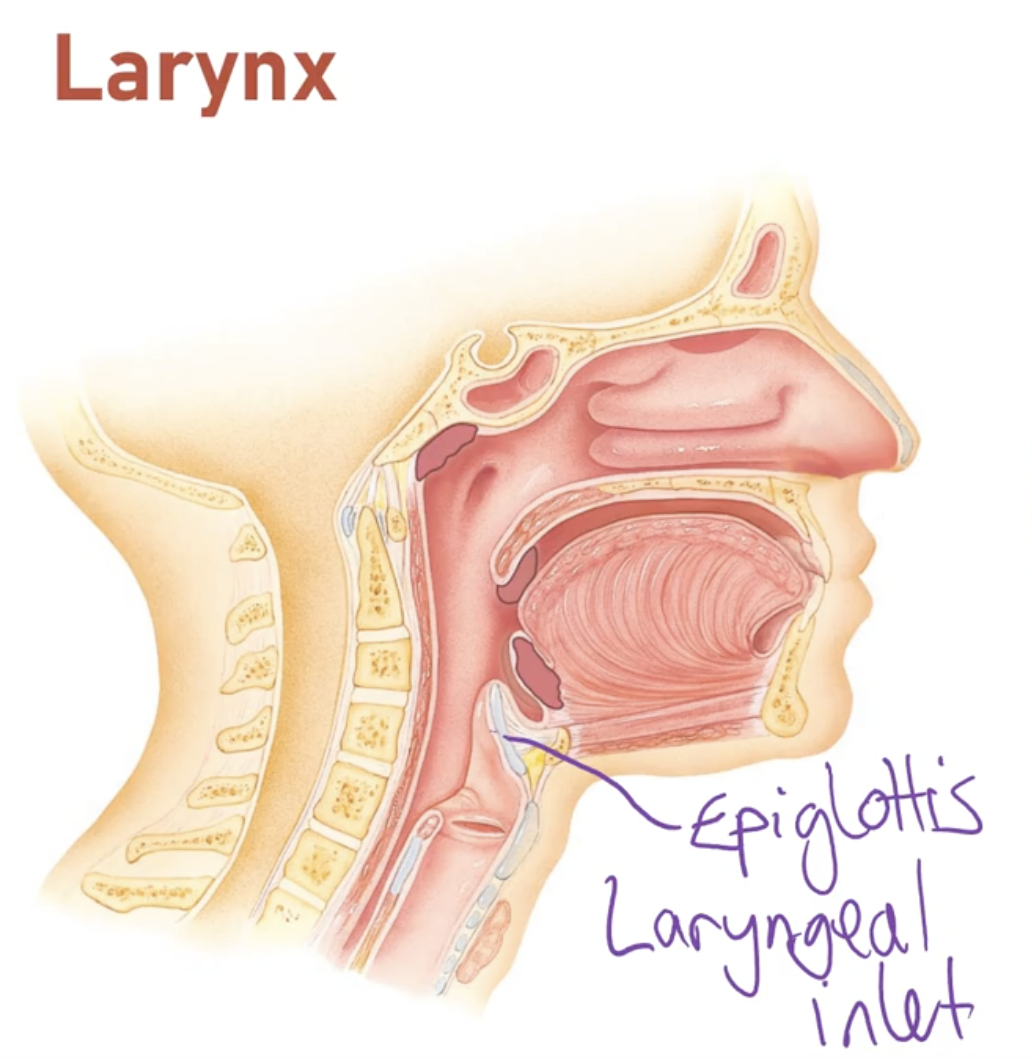
How does voice production work?
-By the release of expired through the constricted opening of the voicebox.
-Within the voice box is the mucous membrane covered ligaments, which are the vocals cords.
-The larynx can control the vocal cords into a position where they vibrate when air passes through them.
-The vibration causes a sound-wave
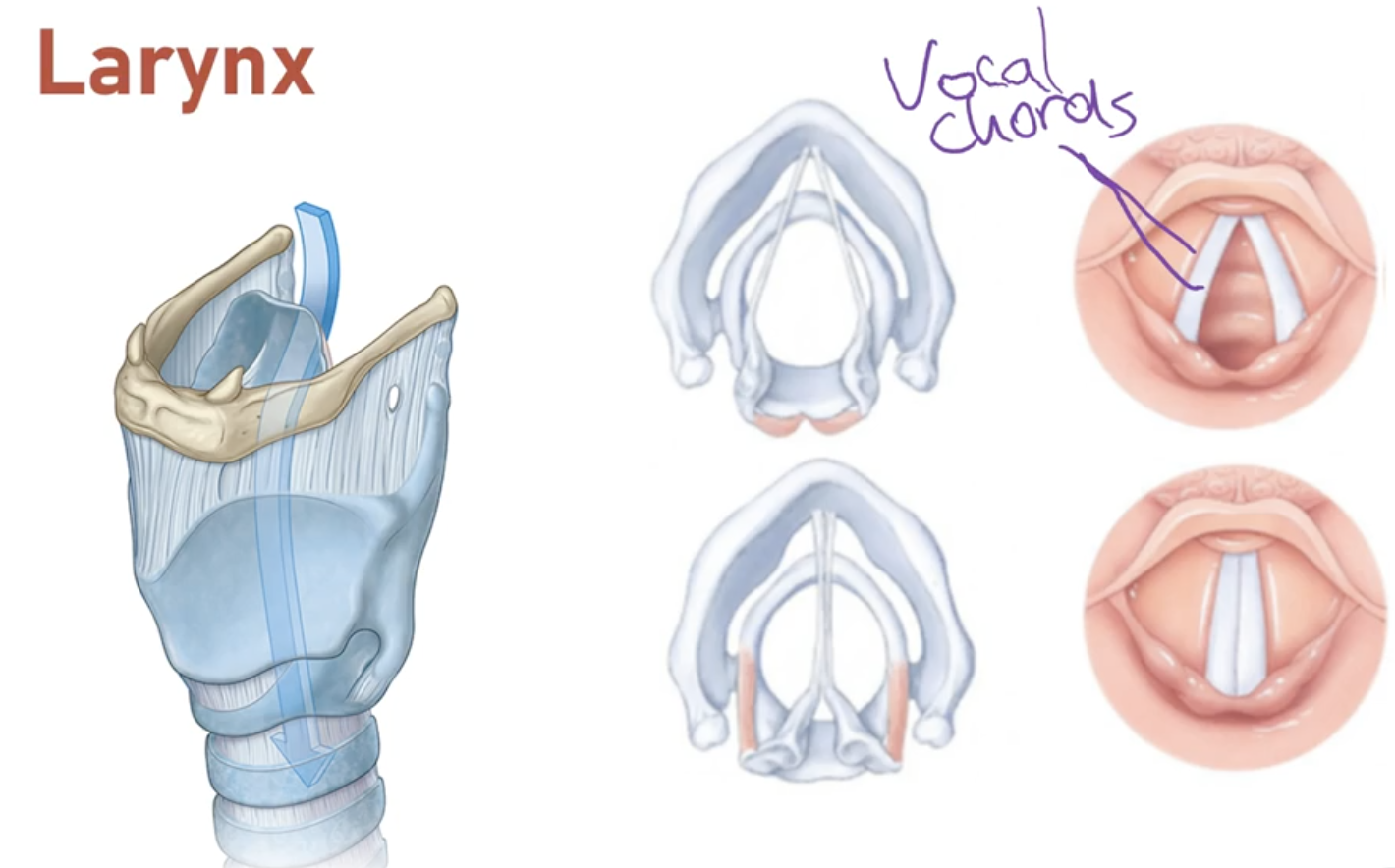
What does the lower respiratory system consist of?
-Trachea
-Primary (main) bronchi
-Secondary (lobar) bronchi
-Tertiary (segmental) bronchi
- Bronchiole
-Terminal bronchioles
-Respiratory bronchioles
-Alveolar ducts
-Alveolar sacs
-Alveoli
What is the trachea?
-First part of lower respiratory tract
-A long flexible tube that runs from larynx (neck) to the bronchi (chest)
-Consists of C-shaped cartilages that stop it from collapsing
-The inside is lined with pseudo-stratified ciliated columnar epithelium with goblet cells, which traps foreign material from going deep in the lungs otherwise can alter gas exchange is alveoli if reached
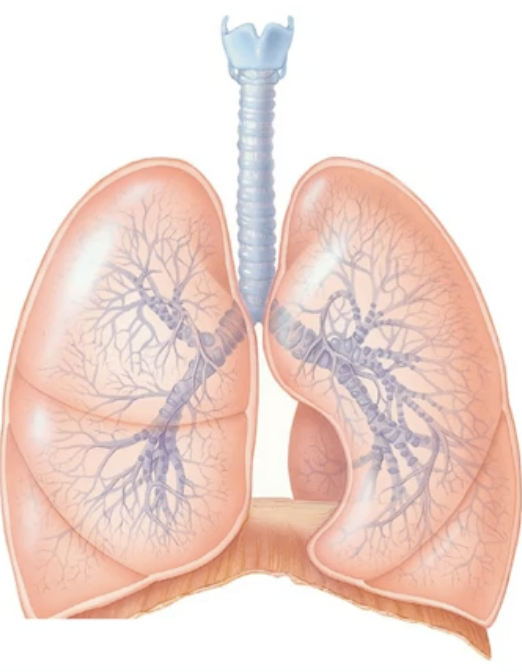
What is the bronchi?
-Inferiorly trachea divides into left and right bronchi
-The left primary bronchus is the tube that carries air to and from the left lung and The right primary bronchus is the tube that carries air to and from the right lung
-The primary bronchus then divides into lobar (secondary) bronchi, which carry air to and from the correct lobe of each lung.
-The secondary bronchus divides into numerous tertiary bronchi (segmental bronchi), which carry air to distinct lung segment
-These tubes continue to branch into smaller segments until they reach the alveoli
What are the other airways
The walls of the airways contain smooth muscle that can tighten or relax. When the muscle tightens, the airways get narrower and it's harder to breathe. When the muscle relaxes, the airways open up and it's easier to breathe. The parasympathetic nervous system makes the muscles tighten (narrow airways), and the sympathetic nervous system makes them relax (widen airways).
What is an alveolus?
- The actual structure where gasses have the ability to move from the air into the bloodstream or vice versa
-Can be found budding off respiratory bronchioles or in clustered alveolar ducts and sacs
-Two cells make up walls, Type 1 alveolar cells and type 2 alveolar cells
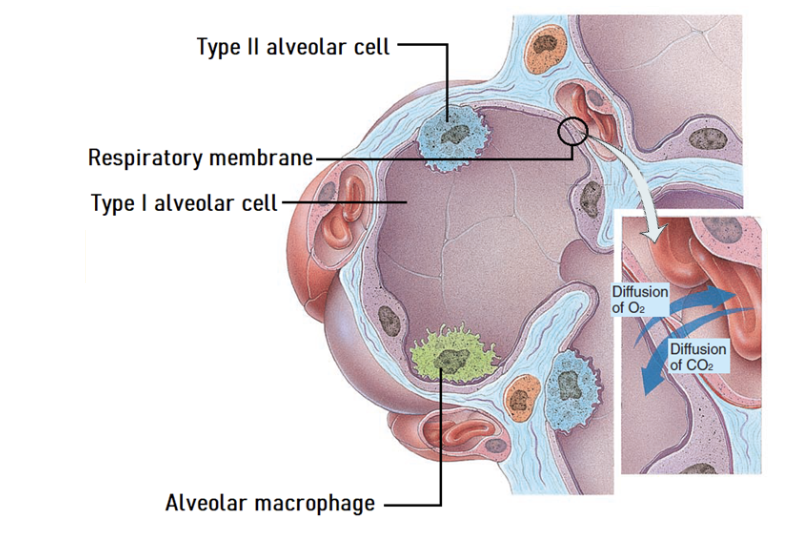
What is a type 1 alveolar cell?
-Abundant squamous epithelial cells that form most of the alveolar walls
-They are very thin cells that form part of the respiratory membrane, which facilitates gas exchange
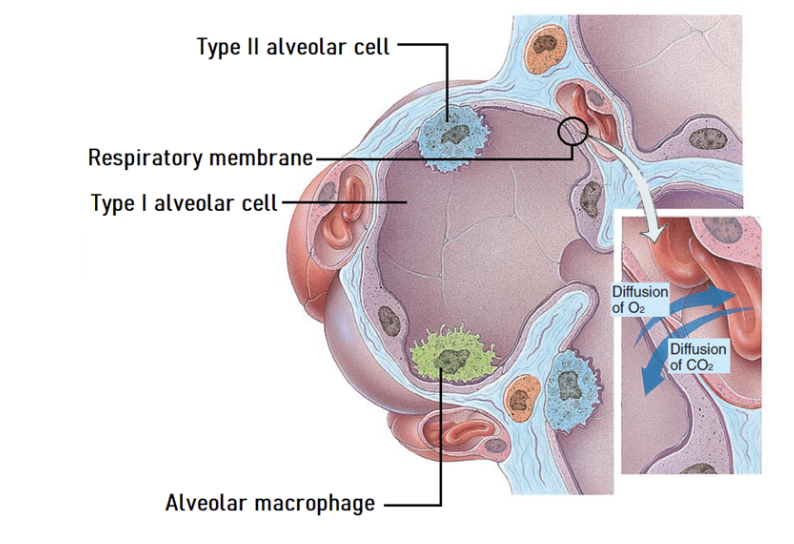
What are type 2 alveolar cells?
-Less numerous and are scattered around the type 1 cells
-They are cuboidal epithelial cells that secrete fluid containing a substance called surfactant, which helps lungs to inflate by reducing surface tension
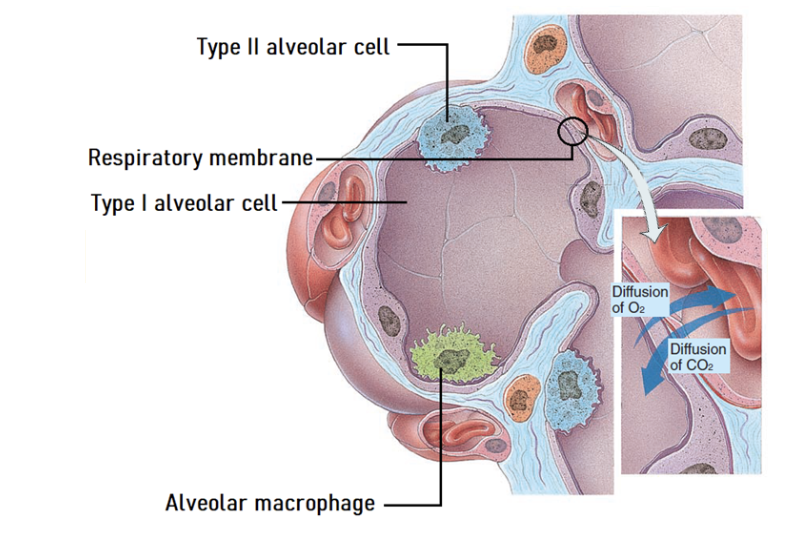
What is the respiratory membrane?
There is a very close relationship between alveoli and pulmonary capillaries. This reduces the distance that gases need to diffuse in order to move between the air and bloodstream. The respiratory membrane is the structure that these gasses need to cross to move between the blood in the capillary and the air in the alveolus. It consists of:
1. The simple squamous epithelium created by the type I alveolar cells
2. The simple squamous epithelium of the capillaries, called the endothelium
3. The fused basement membranes of these two epithelia